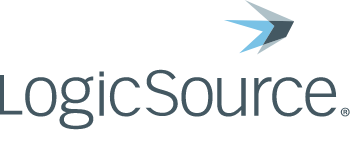
This article was originally published by Health IT Answers.
I recently had the privilege of attending the IDN Summit and Reverse Expo 2023. At the event, LogicSource hosted a series of focus groups titled, “Reducing Non-Clinical Costs to Improve Operating Margins and Fund Patient Care Initiatives.” Participating in these enlightening discussions provided fresh perspectives on a critical industry challenge: how to manage non-clinical spend in today’s challenging economic climate. Here is what I heard from participants in the IDN Summit focus groups and how healthcare organizations can elevate their approach to non-clinical spend management.
Need for a New Approach
The opening premise and theory for discussion was clear: Most health systems are underinvested and underdelivering on indirect, non-clinical savings opportunities. This issue has been exacerbated by recent commentary from Moody’s and the American College of Healthcare Executives (ACHE), have shared concerns about the long road to healthcare financial recovery. According to a Moody report, they warn that healthcare operating cash flow margins might never return to pre-pandemic levels. Margin performance improvement programs are becoming necessary for healthcare organizations, with supply chain departments often tasked as the ones driving most of the savings.
In fact, a survey among the 2023 IDN Summit focus group participants revealed that managing operating margins in the FY24 budgeting process was more challenging than ever before. Participants had set ambitious savings targets for the supply chain, with some expecting as much as $20 million or more. These targets were distributed across categories, with physician preference items and non-clinical purchased services identified as areas with the greatest expected savings potential.
Learning from Other Industries
One of the intriguing aspects of the focus groups was using LogicSource’s approach to healthcare procurement, drawing insights from retail, finance, and consumer packaged goods (CPG) industries.
Several hypotheses were considered as we look toward healthcare, and it’s illuminating how well they held up:
- Non-clinical spending is significant: It consumes 20-25% of net patient revenue.
- GPO contract availability: 75%+ of non-clinical spending falls outside of GPO contracts.
- Low investment in non-clinical procurement resources: Healthcare spends only 0.1-0.2% compared to the 0.7-1.0% spent by best-in-class organizations.
- Benchmarking effectiveness: Traditional unit price benchmarks may not be suitable for complex non-clinical categories.
- Category opportunities include corporate services, IT, facilities, marketing, FF&E, and logistics.
- Potential margin improvement of 100-300 basis points of operating margin is possible.
Build a Budget Roadmap
Given the challenges faced in the FY24 budgeting process, the focus groups discussed the need for a new roadmap for non-clinical procurement in FY25. This roadmap should include:
- Collect data across a comprehensive set of non-clinical categories.
- Analyze benchmarks from outside the healthcare industry to identify the best opportunities for savings.
- Collaborate with C-suite to address previously “off-limits” spending categories.
- Quantify ROI with a high level of confidence for FY24 and beyond.
- Finalize the action plan with a trusted, objective shared services partner.
Key Takeaways from the Sessions
From the discussions within the focus groups, six key takeaways emerged:
Participating in this year’s IDN Summit and Reverse Expo offered a unique window into the state of the industry and shed light on the pressing need for healthcare organizations to rethink their approach to non-clinical spend management. With the right strategies, external expertise, and a willingness to learn from other industries, healthcare systems can elevate their capabilities and weather the financial challenges ahead. It’s clear that the path to improving operating margins and funding patient care initiatives begins with a fresh perspective on non-clinical spending.






